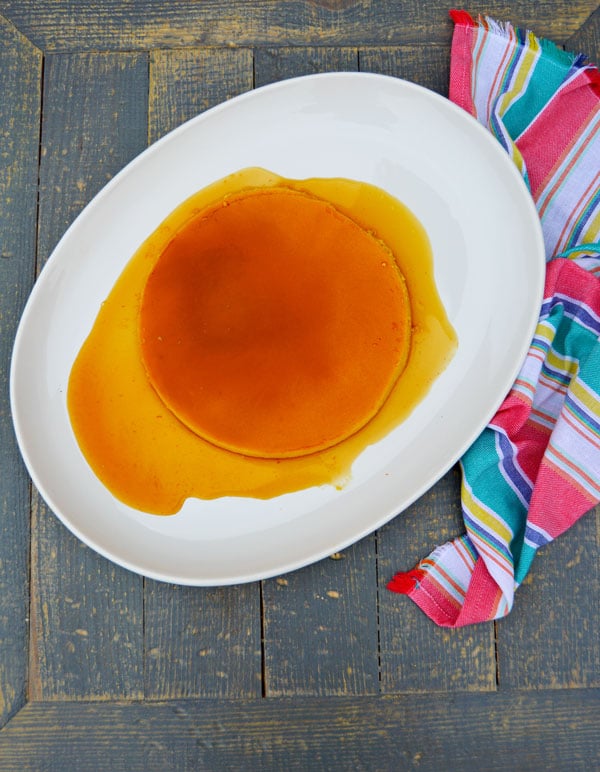
I love talking to people about their favorite recipes and the foods they grew up with. At my last job, we had some of the friendliest and most interesting produce delivery drivers. While I did not look forward to checking in the order and putting all of the produce away, I always enjoyed talking to Ben, Edward, and Ignatio when they delivered our order.
Ignatio grew up in Cuba and when I asked him about the food he grew up eating in Havana, he brought up cuban flan de leche immediately. One afternoon a few days later the kitchen phone rang and Ignatio said he was there with a delivery. We were not expecting anything but when I met him at the door he excitedly handed over a flan his auntie had made for us to try. It was, without doubt, one of the best flans I’ve ever had with a complex bittersweet caramel and a smooth, creamy custard.
I bugged him for the recipe and after getting it from his auntie and translating it, he proudly delivered it to work one morning with our produce.
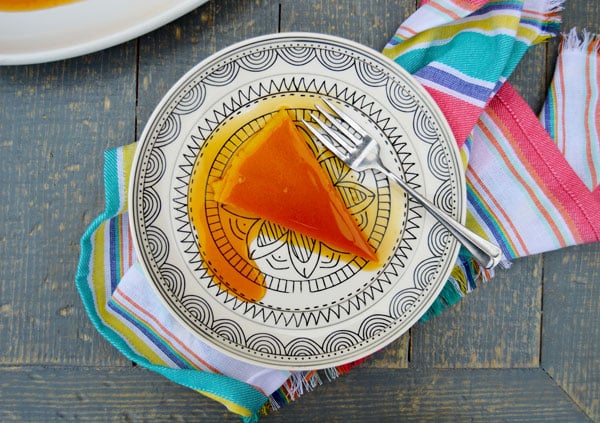
Flan is a dessert found in many cultures and cuisines across the world (creme caramel in France, crema caramella in Italy, quesillo in South America) but most often associated with Spain and the countries it colonized during the early era of sea exploration. The signature of flan is the caramel used to coat the cooking mold and top the firm custard once it is released from the pan. This recipe comes from Cuba and the Caribbean influence is reflected in the use of sweetened condensed milk.

But before we get into the recipe, you may have noticed a new look to these photographs. My friend Braden Hubbard is a carpenter based in Nashville and runs his own business called Heavy Handed Manufacturing. Last month, I asked Braden if he would be interested in making some custom boards I could use for food photography. Braden made three different boards and they turned out better than I could ever have imagined. There’s something pretty cool about having things hand made and not just picking them out at the Ikea warehouse. I’m moving to a new apartment this week and I’m hoping to have Braden make a custom coffee table once I get settled in. If you want to see more of his work, check him out on instagram at @HeavyHandedMFG .

The first step in this flan recipe is to make the caramel. The process is simple but does take a bit of confidence and 15 minutes of concentration. You don’t want to walk away or get distracted when making caramel.
You’ll start by carefully pouring the sugar in the bottom of a 9-inch cake pan and sprinkling the water over top. You do not need to stir them together.
Now put the cake pan directly on the stove over medium heat. Use a pair of tongs to grip the side of the pan and shake it gently. The water will distribute throughout and the sugar will start to melt and bubble. Continue to shake the cake pan gently and swirl when needed to mix any hot spots that are browning faster than the rest.
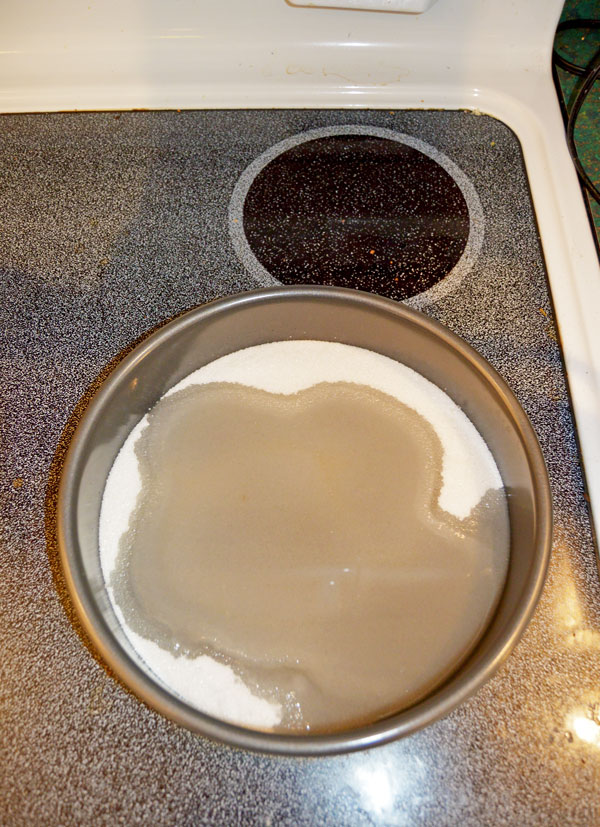
The hardest part of making caramel is knowing the fine line between deliciously caramelized and burnt. After a few rounds of practice, you will know when it is done. If you are making caramel for the first time, trust your instincts.
The caramel is done when it is an even amber brown throughout. It should give off whisps of white smoke. Once the caramel is finished, swirl the pan to evenly coat the caramel on the bottom and up the sides.
The flan is cooked in a water bath. The easiest way to do this is to fold a clean dish towel and place it evenly in the bottom of a large oven-safe sauté pan or roasting pan. Then, place the cake pan on the towel. Cover the flan with aluminum foil to protect it and fill the pan with enough very hot water to reach half way up the sides of the cake pan.
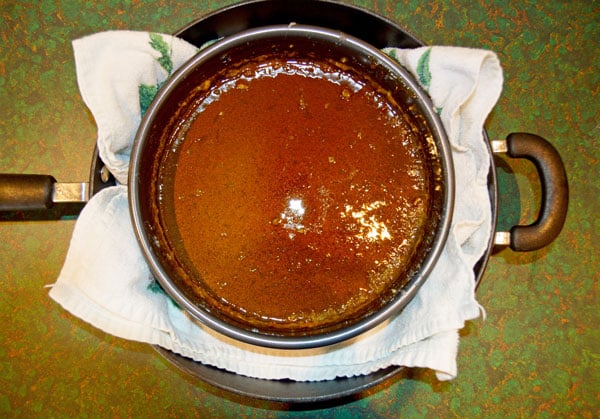
After baking, immediately remove the flan from the water bath and let it cool. The flan should chill for at least 3 hours or up to overnight. To serve, run a small knife around the edge of the pan to loosen the edges. Invert a serving platter over the cake pan and quickly turn them both over to release the flan. Scrape out any excess caramel and drizzle it over the top of the flan.
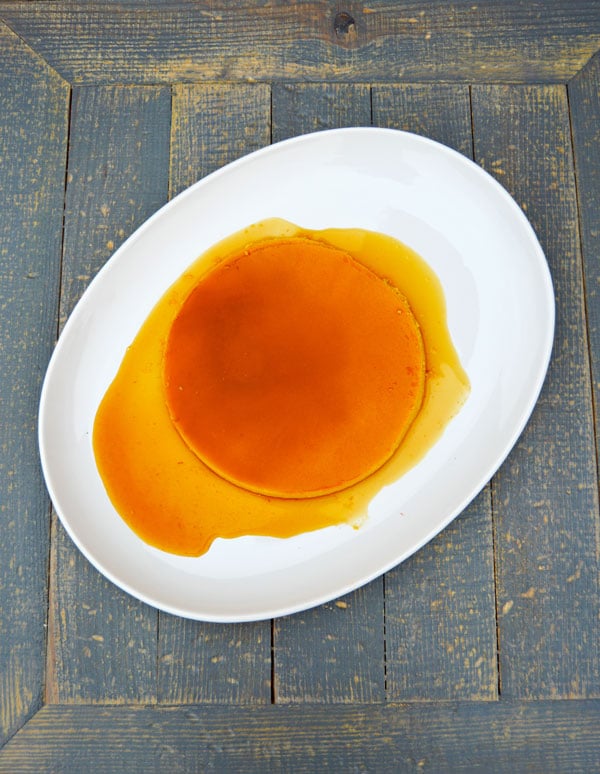
I like flan best when it’s served very cold and unadorned. I suppose you could add a dollop of whipped cream but I’m not sure it is needed. Some berries would also make a nice garnish.
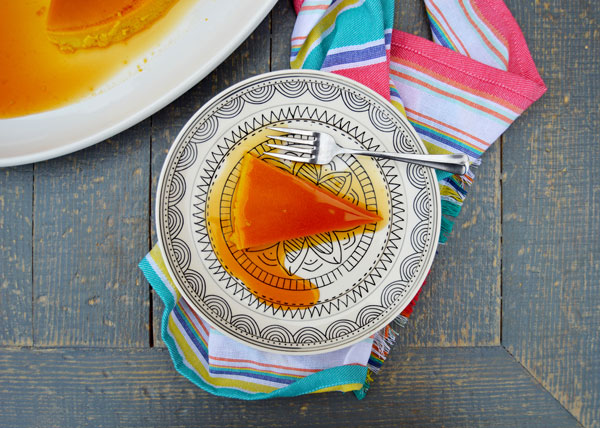
Jordan Hamons | [The Hungry Traveler|http://www.thehungrytravelerblog.com]
Yields 1
25 min
1 hr
1 hr, 25
Ingredients
1 cup (200 grams / 7 ounces) granulated sugar
3 tablespoons water
5 whole eggs
1 tablespoon vanilla extract
1 (14 ounce) can sweetened condensed milk
1 (12 ounce) can evaporated milk
Instructions
Adjust oven rack to middle position and heat the oven to 300 degrees. Line the bottom of a large roasting pan with a clean dishtowel and set aside.
Evenly pour the sugar into the bottom of a 9-inch cake pan and sprinkle the water on top. Place the cake pan directly on the stove over medium heat. Avoid stirring the mixture and let the sugar melt and bubble. If it is cooking unevenly, use tongs to grip the side of the pan and gently shake it to distribute. Once the sugar melts, continue to use the tongs to gently swirl the pan over medium heat until the sugar turns a roasted amber similar to the color of peanut butter. Remove the pan from the heat and swirl to coat the entire bottom and sides of the pan with the caramel. Set aside to let cool and harden.
Using a blender or immersion blender, blend together the eggs, vanilla extract, sweetened condensed milk, and evaporated milk until smooth.
Pour the egg and milk mixture into the prepared cake pan. Cover the pan tightly with aluminum foil and place in the prepared roasting pan. Fill the pan with enough very hot water to come half way up the sides of the cake pan.
Place the large roasting pan in the oven and bake until the center of the flan just jiggles slightly when shaken and registers around 180 degrees. It will take around 45 minutes to an hour but start checking the custard around 30 minutes. Once the custard is finished, immediately remove the cake pan from the water bath.
Allow the custard to cool to room temperature and then refrigerate for at least 2 hours or overnight. Unmold the custard by running a thin knife along the sides of the cake pan to loosen the flan. Invert a serving platter over the cake pan and flip both the pan and platter over in one quick motion. Use a rubber spatula to scrape any left over caramel onto the flan. Serve cold. Leftover flan can be loosely wrapped and kept in the refrigerator for 2-3 days.
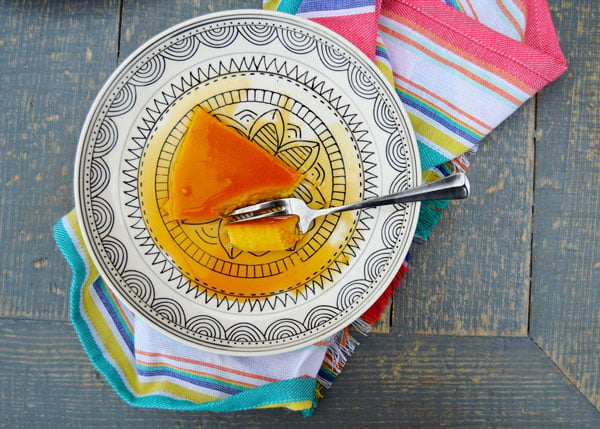
Credit to The Oxford Companion to Sugar and Sweets by Darra Goldstein for the information on the history of flan.

 Save Recipe
Save Recipe
Comments